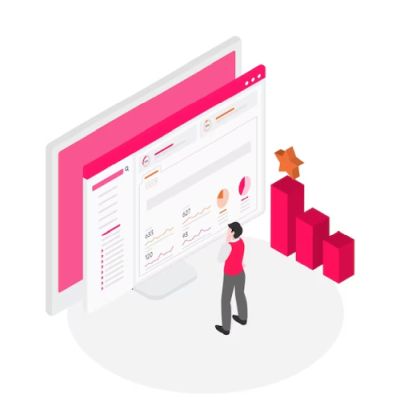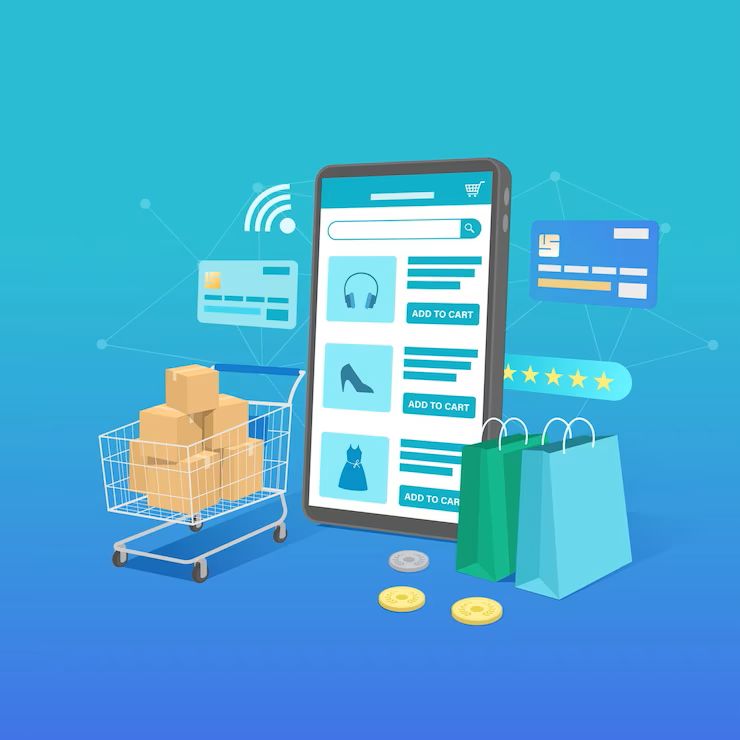Maximizing ROI: How to Get Low Cost Web Traffic that Converts

Looking to maximize your return on investment (ROI) and get low-cost web traffic that actually converts?
Look no further.
In this article, we will share proven strategies to help you achieve just that.
In today’s digital landscape, driving traffic to your website is not enough.
You need targeted traffic that is more likely to convert into leads or sales. But how do you do that without breaking the bank?
We understand that every business has unique goals and budgets.
That’s why we have compiled a range of cost-effective strategies that can be tailored to your specific needs.
From optimizing your website for search engines to leveraging social media advertising, we’ve got you covered.
We’ll also delve into the world of content marketing and show you how to create compelling and shareable content that attracts your target audience.
Additionally, we’ll explore the power of pay-per-click (PPC) advertising and provide tips on how to make the most of your ad spend.
Don’t settle for high traffic numbers that don’t translate into tangible results.
Join us as we uncover the secrets to getting low-cost web traffic that converts and skyrocketing your ROI.
Understanding the importance of ROI in web traffic

In today’s competitive digital landscape, driving traffic to your website is just the first step.
To truly maximize your return on investment (ROI), you need traffic that converts into leads or sales.
But why is ROI so important when it comes to web traffic?
ROI is a crucial metric that measures the profitability of your marketing efforts.
It helps you determine whether the resources you’re investing in generating web traffic are actually paying off.
High traffic numbers may look impressive, but if they don’t translate into tangible results, they’re essentially meaningless.
To calculate ROI, you need to compare the cost of acquiring web traffic with the revenue generated from that traffic.
By focusing on low-cost web traffic that converts, you can optimize your marketing budget and achieve a higher ROI.
But how do you achieve this without breaking the bank? Let’s explore some key factors that affect web traffic cost and strategies for getting low-cost web traffic.
The key factors that affect web traffic cost

Before diving into cost-effective strategies, it’s important to understand the key factors that influence web traffic cost.
By identifying these factors, you can make informed decisions and allocate your budget more effectively.
1. Competition: The level of competition in your industry plays a significant role in determining web traffic cost.
Highly competitive niches often have higher costs per click or impression, making it more challenging to get low-cost traffic.
2. Targeting: The more targeted your web traffic is, the higher the chances of conversion.
Targeting specific demographics, interests, or geographic locations can help you reach the right audience at a lower cost.
3. Quality Score: Search engines and advertising platforms assign quality scores to websites and ads based on factors like relevance, user experience, and click-through rates.
Higher quality scores can lead to lower costs and better ad placements.
4. Seasonality: Certain times of the year may have higher demand for web traffic, resulting in increased costs.
Understanding seasonal trends can help you optimize your campaigns and identify opportunities for lower-cost traffic.
By keeping these factors in mind, you can develop cost-effective strategies that maximize your ROI.
Let’s explore some proven strategies for getting low-cost web traffic.
Strategies for getting low cost web traffic
Utilizing organic search engine optimization (SEO)

One of the most effective ways to drive low-cost web traffic is through organic search engine optimization (SEO).
By optimizing your website for search engines, you can increase your organic visibility and attract targeted visitors without paying for each click.
To get started with SEO, consider the following steps:
1. Keyword Research: Identify relevant keywords that your target audience is searching for.
Use tools like Google Keyword Planner or SEMrush to find keywords with high search volume and low competition.
2. On-Page Optimization: Optimize your website’s content, meta tags, headings, and URLs to align with your target keywords.
Ensure your website is mobile-friendly and loads quickly to enhance the user experience.
3. Link Building: Earn high-quality backlinks from authoritative websites to improve your website’s credibility and search engine rankings.
Guest blogging, influencer outreach, and social media promotion can help you acquire valuable backlinks.
4. Content Creation: Regularly publish high-quality, informative, and engaging content that addresses the needs and interests of your target audience.
Focus on creating evergreen content that continues to drive traffic over time.
By investing in SEO, you can attract organic traffic that is more likely to convert, resulting in a higher ROI.
Leveraging social media advertising

In today’s social media-dominated world, advertising on platforms like Facebook, Instagram, and LinkedIn can be a cost-effective way to reach your target audience.
Social media advertising allows you to target specific demographics, interests, and behaviors, ensuring your ads are seen by the right people.
To leverage social media advertising effectively, consider the following tips:
1. Define Your Target Audience: Clearly define your target audience based on demographics, interests, and behaviors.
This will help you create highly targeted campaigns that generate low-cost traffic.
2. Create Compelling Ads: Craft visually appealing and engaging ads that resonate with your target audience.
Use eye-catching images, compelling copy, and clear calls-to-action to encourage clicks and conversions.
3. Optimize Ad Campaigns: Continuously monitor and optimize your social media ad campaigns.
Test different ad creatives, audience segments, and placements to identify what works best for your business.
4. Retargeting: Implement retargeting campaigns to reach people who have previously visited your website or engaged with your social media content.
Retargeting allows you to stay top-of-mind and increase the chances of conversion.
By leveraging social media advertising effectively, you can drive low-cost web traffic that is highly targeted and more likely to convert.
Crafting compelling and targeted content

Content marketing is a powerful strategy for attracting low-cost web traffic and building brand authority.
By creating compelling and targeted content, you can attract your ideal audience and encourage them to engage with your website.
To craft compelling and targeted content, consider the following tips:
1. Understand Your Audience: Conduct thorough research to understand your target audience’s needs, pain points, and interests.
Use this information to create content that resonates with them and provides value.
2. Keyword Optimization: Incorporate relevant keywords into your content to improve search engine visibility.
However, prioritize creating high-quality, valuable content that engages readers over keyword stuffing.
3. Diversify Content Formats: Experiment with different content formats such as blog articles, videos, infographics, podcasts, and interactive quizzes.
Diversifying your content can attract a wider audience and increase engagement.
4. Promote Your Content: Share your content on social media, engage with online communities, and collaborate with influencers to increase its reach.
Encourage social sharing and provide easy ways for readers to share your content with their networks.
By consistently creating compelling and targeted content, you can drive low-cost web traffic, establish thought leadership, and nurture relationships with your audience.
Implementing effective email marketing campaigns

Email marketing remains one of the most cost-effective ways to drive web traffic and generate conversions.
By building an engaged email list and delivering valuable content to your subscribers, you can drive repeat visits and increase customer loyalty.
To implement effective email marketing campaigns, consider the following strategies:
1. Build a Quality Email List: Focus on building a quality email list of subscribers who have opted-in to receive your emails.
Offer valuable incentives like exclusive content or discounts to encourage sign-ups.
2. Segmentation: Segment your email list based on demographics, interests, purchase history, or engagement level.
This allows you to tailor your email content and offers to specific segments, increasing relevancy and conversion rates.
3. Personalization: Use personalization techniques to make your emails more personalized and relevant to each subscriber.
Address them by name, recommend products based on their past purchases, and send targeted offers based on their preferences.
4. Automation: Implement email automation to deliver timely and relevant messages to your subscribers.
Set up automated welcome emails, abandoned cart reminders, or personalized product recommendations to drive traffic and conversions.
By implementing effective email marketing campaigns, you can nurture relationships with your audience, drive repeat traffic, and increase conversions, all at a low cost.
Harnessing the power of influencer marketing

Influencer marketing has gained significant popularity in recent years, and for good reason.
By partnering with influencers in your industry, you can tap into their engaged audience and drive low-cost web traffic.
To harness the power of influencer marketing, consider the following steps:
1. Identify Relevant Influencers: Research and identify influencers who align with your brand values and target audience.
Look for influencers who have a genuine connection with their followers and consistently produce high-quality content.
2. Build Relationships: Reach out to influencers and build genuine relationships with them.
Engage with their content, comment on their posts, and share their content to establish rapport.
3. Collaborate on Content: Work with influencers to create content that promotes your brand or products.
This can include sponsored blog posts, social media shoutouts, or product reviews. Ensure the content is authentic and aligns with the influencer’s style.
4. Track and Measure Results: Use tracking links or unique discount codes to measure the effectiveness of your influencer campaigns.
Monitor engagement, traffic, and conversions to determine the ROI of your influencer partnerships.
Influencer marketing can be a cost-effective way to reach a highly targeted audience and generate low-cost web traffic that converts.
Exploring alternative advertising channels

While platforms like Google and Facebook dominate the advertising space, exploring alternative advertising channels can help you reach untapped audiences and potentially drive low-cost web traffic.
Consider the following alternative advertising channels:
1. Native Advertising: Native ads seamlessly blend with the content of the platform they appear on, offering a less intrusive advertising experience.
Platforms like Taboola and Outbrain provide native advertising opportunities across various websites.
2. Podcast Advertising: With the rise in podcast popularity, advertising on relevant podcasts can be an effective way to reach your target audience.
Research popular podcasts in your industry and explore advertising opportunities.
3. Guest Blogging: Contribute high-quality guest posts to authoritative websites in your industry.
This not only helps drive traffic back to your website but also enhances your brand’s credibility and visibility.
4. Online Forums and Communities: Engage with online forums and communities related to your industry.
Provide valuable insights and build relationships with community members. This can lead to increased brand visibility and referral traffic.
By exploring alternative advertising channels, you can tap into new audiences and potentially find low-cost web traffic sources that your competitors may have overlooked.
Measuring and optimizing ROI for web traffic

Once you’ve implemented the strategies outlined above, it’s crucial to measure and optimize your ROI for web traffic.
By continuously monitoring and analyzing your results, you can identify areas of improvement and make data-driven decisions.
Consider the following steps to measure and optimize your ROI for web traffic:
1. Set Clear Goals: Define your goals and key performance indicators (KPIs) upfront.
Whether it’s increasing sales, generating leads, or improving brand awareness, having clear goals helps you track your progress and measure success.
2. Track Conversions and Attribution: Implement conversion tracking on your website to measure the impact of your web traffic on conversions.
Use tools like Google Analytics or marketing automation platforms to track attribution and identify the sources that drive the most valuable traffic.
3. Analyze Performance Metrics: Regularly analyze key performance metrics such as click-through rates, conversion rates, cost per acquisition, and revenue generated.
Identify trends, patterns, and areas for improvement.
4. A/B Testing: Test different variations of your ads, landing pages, or email campaigns to identify what works best.
A/B testing allows you to optimize your strategies based on data and improve your ROI.
5. Continuous Optimization: Use the insights gained from your analysis to optimize your strategies and campaigns.
Adjust your targeting, messaging, or creative elements based on what resonates most with your audience.
By continuously measuring and optimizing your ROI for web traffic,
you can ensure that your efforts are delivering the desired results and maximizing your return on investment.
